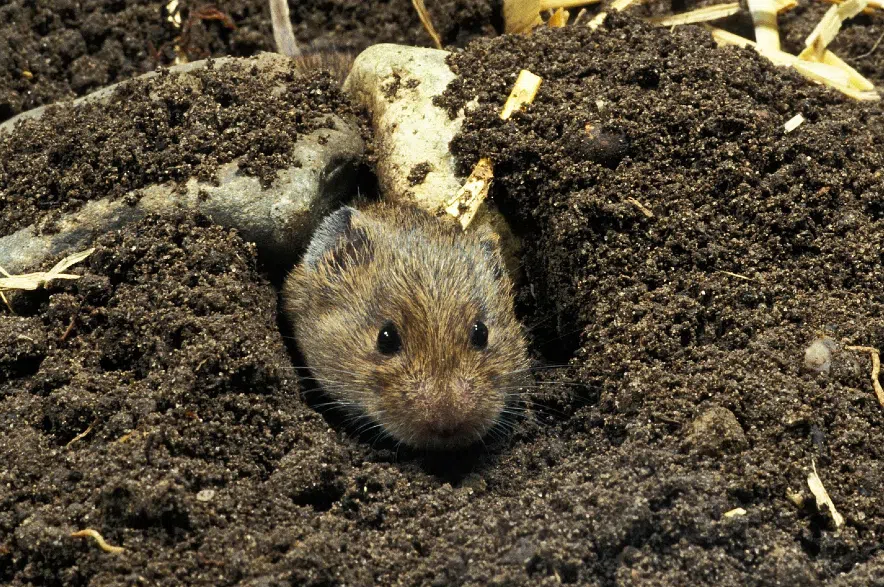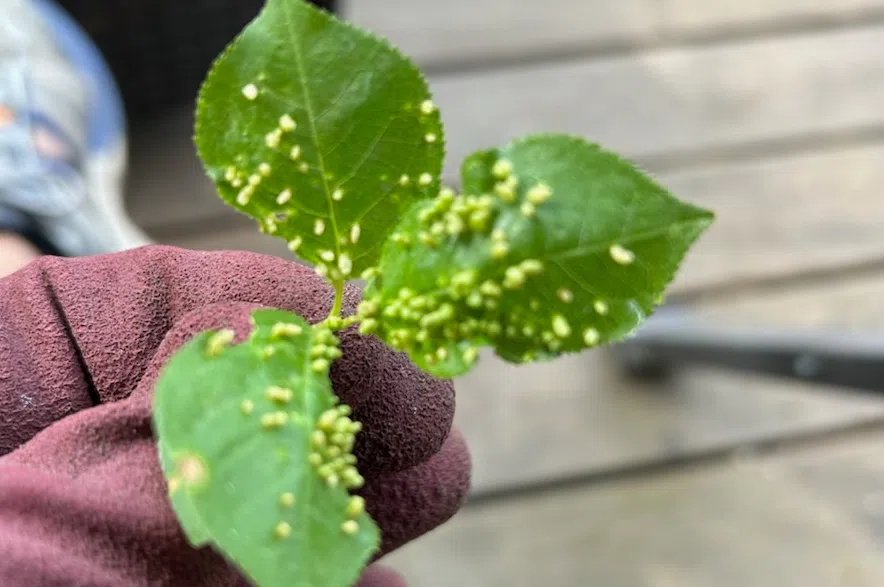Jill and Rick Van Duyvendyk answer all your gardening questions in Garden Talk on 650 CKOM and 980 CJME every Sunday morning at 9 a.m. Here are some questions and answers from the May 18 show:
These questions and answers have been edited and condensed for clarity.
Q: How can I stop voles invading a lily or any garden bed?
A: Build a couple little boxes with an access hole in them that are big enough for you to put wooden snap traps in baited with peanut butter and a craisin or raisin on top.
Poisons doesn’t work on voles. The poisons on the market are designed for mice.
Don’t have piles of stuff around where the voles can hide underneath. If your garden backs onto a park or a grass field they’ll likely spread out and eat the grass in the summertime and move back in winter.
You can try planting garlic and onions among the lilies because they didn’t like that and some people have had success using Mosquito Barrier in those areas.
Read more:
- Garden Talk: When can I transplant a rhubarb plant?
- Garden Talk: Tips for planning a thriving home vegetable garden
- Garden Talk: Growing a sweet crop of strawberries in Saskatchewan
Q: If I divide and move rhubarb in May will I still be able to harvest it this year?
A: It is best to divide your rhubarb when it’s dormant in the early spring or really late fall. If it has big leaves already, it’s not a great time to do it.
If you do it now, it will set it back a bit and only cut the plant in half rather than cutting it into six pieces or something like that.
Q: How do I deal with grass in my flower beds?
A: There’s two ways — you can take a tool like a dandelion fork and dig it up the best you can or try a spray like Roundup Advanced or a vinegar-water-dish soap mix. With the spray you’ll have to apply it many times because the grass will keep coming from the base, and if any hits the flowers it will kill those, too.
Q: What is the best organic fertilizer for apple trees and how often should you fertilize?
A: A fruit and berry fertilizer is best. If you want them to fruit, don’t use one with too much nitrogen. If you use a 30-10-10 on a fruit tree all the time, the tree is going to grow big leaves and lots of branches but not much fruit. If you give it less nitrogen and do some pruning to stress the tree a little bit it will produce produce a big crop.
Fertilize once or twice in the spring with Fruit and Berry, Dirt and Grow or Home and Garden Excellence.
Q: Which variety of cherry tree flowers without producing fruit?
A: Spring Snow has green leaves and white flowers. Courageous has greeny purple leaves and pink flowers. They do have a tiny fruit, less than a pea size that are easy to pick up with a lawnmower.
If you want a smaller tree, try a Muckle plum or a Princess Kay plum, they have no leaves in the spring and Double Flowering plum, doesn’t make any fruit, just flowers.
Crabapples like Purple Spire, Midnight Spire and Green Wall Spire are very narrow — they only get about three feet wide and grow straight up. They get fruit, but it drops straight down and is very small and easy to pick up as it’s not all spread everywhere.
Q: What is the spotted stuff on these leaves pictured above?
A: It’s a spider mite. They bite into the leaf and basically spit into it and that causes a growth for the spiders to lay their eggs into.
Spraying for mites is really tough. Try something like End-all or Bug-X Out that control mites but not eradicate them.
Q: My apple tree is very tall and I can’t reach the top apples. Can I cut it down to eight or 10 feet tall and how soon will it grow back?
A: It’ll grow back pretty quick, but you have to prune it next spring or this fall, not now. You can buy extendable poles with a basket on them to reach all the apples at the top, too.
Trim it back is by around one-third, 50 per cent would be pretty harsh. Do it at the end of October or beginning of November or in March or the first week of April next year.
Q: Do I need to fertlilize Calibrachoa when I repot them?
A: Calibrachoa need to be fertilized to continue to bloom. You don’t have to deadhead them. They’re a hybrid, so they’ll just continually bloom all summer but they are heavy feeders. If you have a granular slow release, you can use that, or fertilize them once a week with a water-soluble fertilizer.
Q: My tomato and peppers have been damaged by the cooler night temperatures on top and the leaves are wilted. Will they come back or will they need to be replaced?
A: Most likely they’ll come back but will be set back a little bit. Peppers and tomatoes are warm weather plants, so you can protect them with a cone or even a milk
carton. To give them some extra protection put a few stakes in the ground and throw a light sheet that over top.
Q: I planted two different kinds of grapes last year that are still alive but have never vined out — do I cut off the sticks that don’t have any leaves yet or wait?
A: Just be patient, all of a sudden they will pop out a lot of times. Fertilize with 20-20-20 or 20-10-10 fertilizer. Grapes also need to be planted in a place with lots of sun, so a south or west exposure.
Q: My ferns are all brown. Will they come back?
A: Sometimes they will go dormant for a year. If you dug them up too early in the season before they went dormant, they might have struggled with some transplant shock over the winter season as well. Don’t keep them too wet when there are no leaves on them because they will rot.
Q: I have an area in my yard with high salinity where I am trying to establish a shelter belt, what trees would you recommend?
A: High alkalinity is really tough. You need to buffer the soil using some humic to try to buffer the soil. Some farmers have had good success with products by TopKrop to make high alkalinity areas more productive.
Q: I’ve got a few tall trees casting big shadows on the garden, can I cut the tops off without damaging the trees?
A: You can thin them out but if you cut the tops off at this time of the year, you will hurt the trees. Do it when they are more dormant. If they are very big trees, you may want to get an arborist involved to pruning to get more light in without hurting the tree.
Q: I planted Okanese poplars last year, is there something we can do to get them growing faster?
A: Fertilizer and water. Put some drip irrigation around the area and apply a 30-10-10 fertilizer. You can use a granular fertilizer like a GroundKeeper and spread it just before it rains because the drip systems won’t take that fertilizer down.
Read more:












